The site of a massacre of Aboriginal people near Jews Lagoon in January 1838 has been included on the State Heritage Register.
On June 25 this year the Waterloo Creek massacre site at 3837 Millie Road, Jews Lagoon, was declared a site of state heritage significance as “a place of frontier conflict.”
The area is on the boundary of Narrabri and Moree Plains Shires, on land under the responsibility of the Wee Waa Local Aboriginal Lands Council.
The Waterloo Creek massacre refers to a series of violent clashes between mounted police, civilian vigilantes and indigenous Gamilaraay peoples, which occurred during December 1837 and January 1838.
Many Aboriginals, the exact number is unknown, were killed.
Contemporary reports, and more recent historians and other commentators, have offered varying accounts of the exact number of casualties.
Reports ranged from ‘40 to 50’, ‘60 or 70’ people killed, even up to ‘200 to 300’ fatalities, as one book account says.
The State Heritage Inventory records that: “The Waterloo Creek Massacre Site is of state heritage significance as a place of frontier conflict between the traditional Aboriginal custodians of the central region of northern NSW and the British colonists that resulted in the brutal murder of Kamilaroi/Gamilaroi/Gamillaraay/Gomeroi people.
“Today, places such as the Waterloo Creek massacre site serve to remind all Australians of our shared history and how this event helped shape our country.
“These places reclaim First Nation history as part of our holistic story to ensure Australia’s colonial atrocities provide truths that do not fade from the national memory.”
The heritage listing is the culmination of a long campaign of research by members of the Kamilaroi community and others including Narrabri, Wee Waa and Moree community members and organisations over the past decade.
Narrabri Shire Council welcomed the addition of the Waterloo Creek massacre site to the State Heritage Register.
The project has been a successful partnership of individuals and organisations, one of the participants emphasised.
The application to the NSW Heritage Council was made by the Wee Waa Local Aboriginal Lands Council with support from Narrabri Shire Council, Narrabri Local Aboriginal Lands Council, Moree Plains Shire Council, Moree Local Aboriginal Lands Council, the NSW Department of Premier and Cabinet and North West Local Land Services.
Several books have been written and a contemporary colonial government inquiry was held which documented the Waterloo Creek massacre and its aftermath.
The following is taken from information online:
“The massacre events have been subject to conflicting accounts by various participants and in subsequent reports and historical analyses, about the nature and number of fatalities.
“A Sydney mounted police detachment was dispatched by acting NSW Lieutenant Governor Colonel Kenneth Snodgrass, to track down the Namoi, Weraerai and Kamilaroi people who had killed five stockmen in separate incidents, on recently established pastoral runs on the upper Gwydir River area.
“After two months the mounted police, consisting of two sergeants and twenty troopers led by Major James Nunn, arrested 15 Aboriginals along the Namoi River.
“They released all but two, one of whom was shot while allegedly attempting to escape.
“The main body of Kamilaroi eluded the troopers, thus Major Nunn’s party, along with two stockmen, pursued the Kamilaroi for three weeks, from present-day Manilla to the upper Gwydir River.
“On the morning of January 26, in a surprise attack on Nunn’s party, Corporal Hannan was wounded in the leg with a spear, and subsequently four or five Aboriginals were shot dead in retaliation.
“The Aboriginals fled down the river as the troopers regrouped, rearmed and pursued them, led by the second-in-command, Lieutenant George Cobban.
“Cobban’s party found the group about a mile down the river at a point now known as Waterloo Creek, where a second engagement took place.
“The encounter lasted several hours and no Aboriginals were captured.
“As there had been no declaration of martial law or other authorising legislation, the police lacked authority to use more than reasonable force proportionate to any risk to the safety of persons or property.
“The troopers may therefore have used disproportionate force directed towards individuals who posed little or no risk.
“There was a suspicion that the troopers might have acted as an ill-disciplined military force rather than as a regular police force.”
‘A partnership towards understanding our shared history’
“The journey to have the site listed and recognised as part of NSW State Heritage has taken about 10 years, with the site now formally gazetted and listed on the State Heritage Register,” one of the participants in the process told The Courier.
“The surrounding communities of Narrabri, Wee Waa and Moree have been aware of the history of the Waterloo Creek massacre.
“The journey began as a conversation which led to a series of site inspections which led to moves to have the process formalised, with the intention of having it registered as a State Heritage Site.
“We didn’t know how it would finally end.
“We partnered with community members and local authorities, and we were always aware there is a reluctance sometimes to come to terms with our shared history.
“This has been an opportunity for us to explore that shared history and the way in which our district, the state and Australia have evolved. It’s about inclusion and a truth telling exercise, without blame, and seeing that the community can share history by acknowledging the events which have shaped our lives today.”
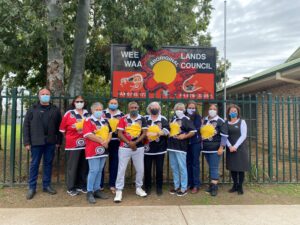
Some of the people involved in the move for inclusion of the Waterloo Creek massacre site on the State Heritage Register, from left, heritage operations officer with heritage NSW Steven Booby, Wee Waa Local Aboriginal Lands Council board members Naomi Nean, Cheryl Gordon, Samantha Hamilton, Cliff Toomey, chief executive officer Robyn Keeffe, Maureen Smith, Marilyn Binge, Robyn Green, Jane Linehan (formerly Narrabri Shire Council). Absent from photo, Cara Stoltenberg (Narrabri Shire Council) and Sue Jackson-Stepowski (State Heritage), Moree Local Aborignal Lands Council, Moree Plains Shire Council and Narrabri Local Aboriginal Land Council representatives).
See more like this:
- Award winning Kamilaroi documentary
- NAIDOC Week celebrations get underway in Narrabri
- Sharing and growing knowledge at native plant propagation workshop
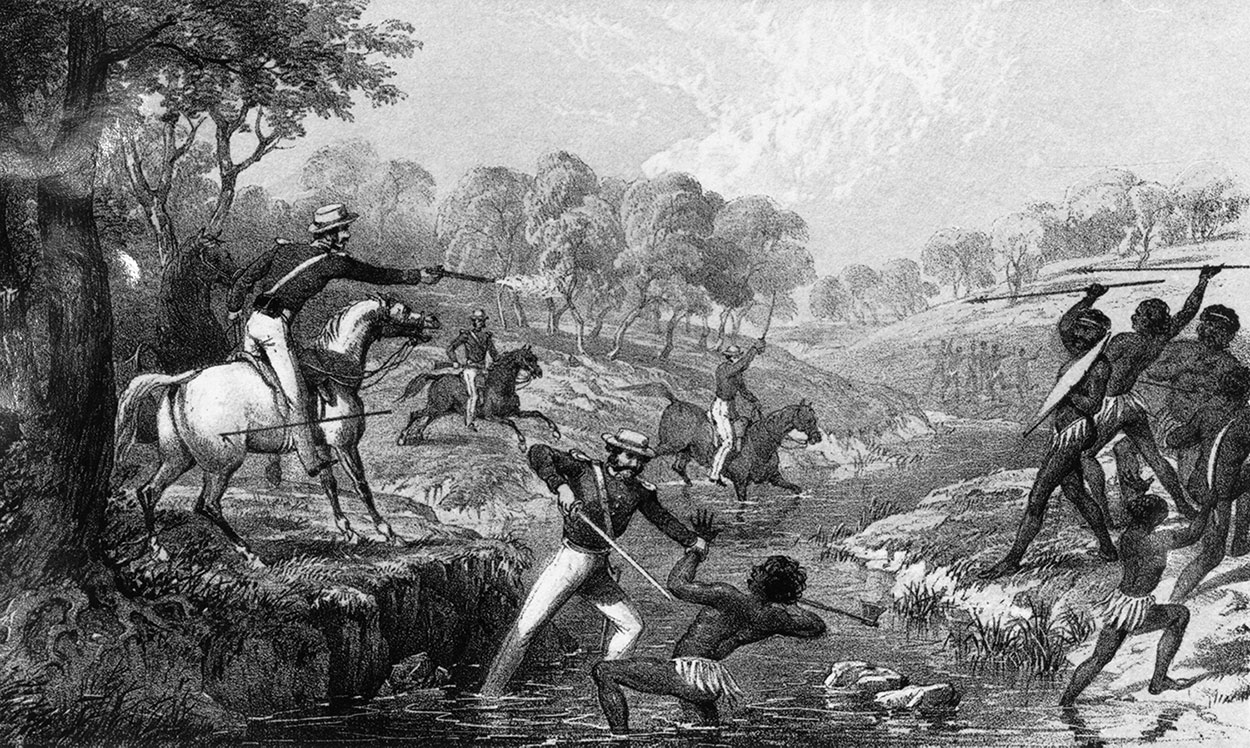


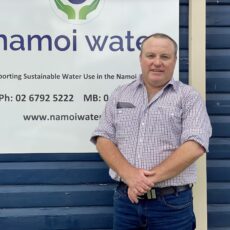
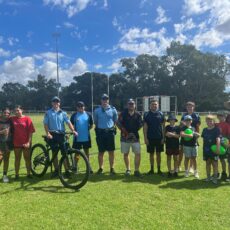
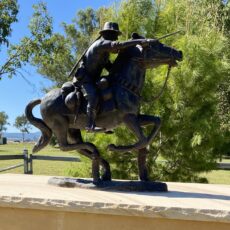
We need to change the date. A sad day followed by a happy day in summer to enjoy celebrations, beach and bbq